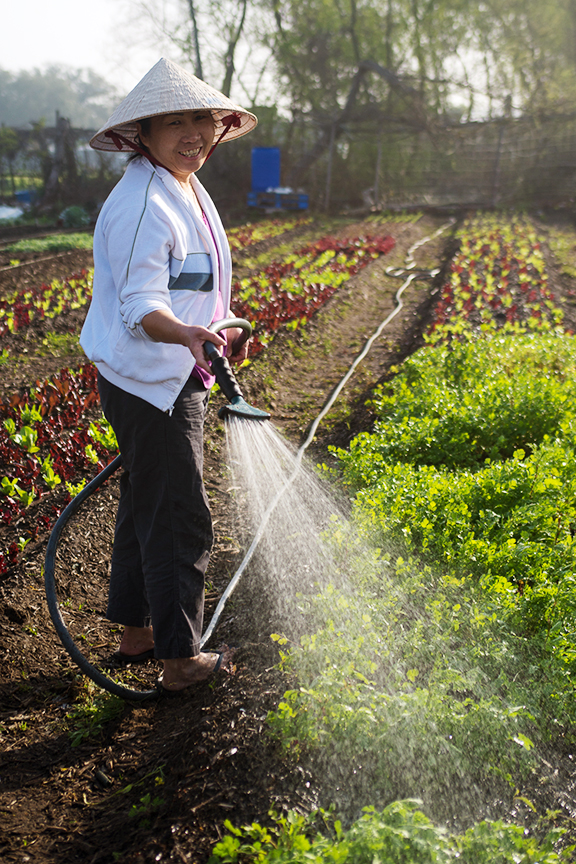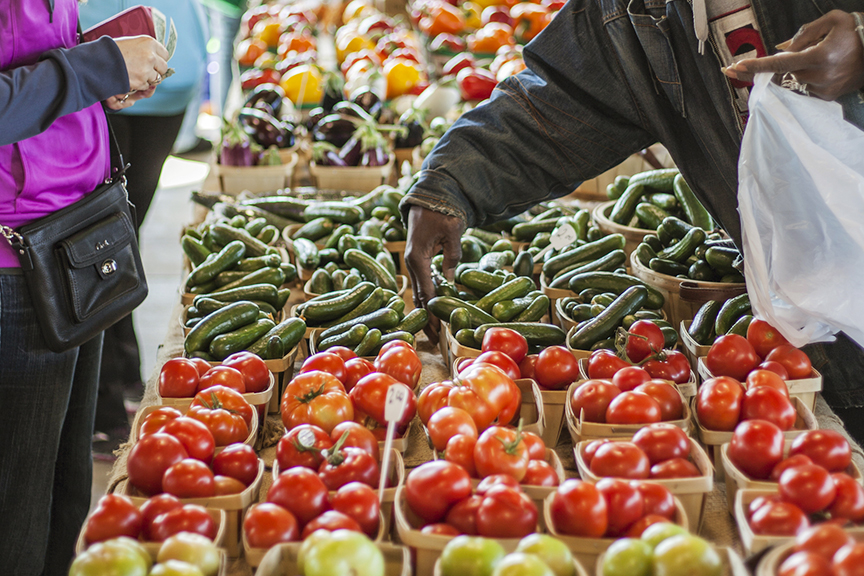Farm to early care and education is a foundational program that connects young children with local food production by bringing farm-fresh food into early care and education settings and offering experiential learning with edible gardens, cooking and tasting fresh fruits and vegetables. Farm to early care and education initiatives work across systems, linking education, health and agriculture to support children’s cognitive, physical and social-emotional development; improve community nutrition; and build sustainable local food systems.

Procuring locally sourced foods can be challenging for early care and education programs, especially smaller centers and home-based providers with limited resources. Similarly, local farmers face obstacles in getting their foods to markets. Improving the capacity of early care and education providers and farmers to collaborate is important to growing more farm to early care and education initiatives around the country.
Increasing funding, promoting incentives, streamlining regulations and providing technical assistance to local community efforts make it easier for early care and education providers and local farmers and food producers to participate and expand the farm to early care and education movement. Below are ideas informed by providers and local farmers for improving the procurement process for farm to early care and education.
Empower providers by creating flexibility in food purchasing.
In response to the COVID-19 pandemic, federal programs increased flexibility for early care and education providers that allowed for online purchasing, alternative service models, participation of families regardless of income and no minimum purchasing requirements. These emergency changes proved effective in supporting local food purchasing for farm to early care and education. More producers, food hubs and farmers markets moved online, allowing providers to purchase virtually. Waivers also opened up opportunities for parents or caregivers to pick up meals, and for some early care and education sites to become hubs for food delivery to families. Still, many sites lack the resources or staff capacity to purchase local foods, and could benefit from streamlined regulations and state support.
Integrate farm to early care and education in state quality rating and improvement systems.
State quality rating and improvement systems (QRIS) establish a uniform approach to assess, improve and communicate the level of quality of early care and education providers. When state agencies include farm to early care and education as part of QRIS guidelines, it provides incentive for providers to participate and procure local foods. State agencies should also use a racial equity framework in QRIS to ensure centers in historically under-resourced communities have funding and incentives to participate in the rating system.
“States should leverage quality rating systems to support providers in advancing the development of children. Everything from finer gross motor skills to good nutrition to equitable opportunity – all really impact children’s cognitive and social well-being, and farm to early care is a big part of that.”
Kelcie Silvio, Voices For Georgia’s Children
Continue to increase reimbursement rates.
The U.S. Department of Agriculture (USDA) extended higher Child and Adult Care Food Program (CACFP) reimbursement rates for all family child care homes, regardless of area eligibility. All homes can receive the Tier 1 reimbursement rate of $103 per child for breakfast, lunch and a snack versus the Tier 2 rate of $50. This expands the higher reimbursement to many homes in rural, suburban and high-cost areas, which can help them purchase more locally sourced food. Making these eligibility changes permanent, continuing to increase reimbursement rates and strengthening CACFP to better serve providers and families are vital to ensuring critical nutrition support reaches our youngest children.
Connect providers and producers.
A common barrier for early care and education providers is not knowing how to connect with local farmers and food producers. Colorado’s Department of Public Health & Environment is facilitating matchmaking through online surveys of providers and farmers to gather information on the needs and abilities of each, then connecting them appropriately. Now, farmers are planting entire rows for providers with whom they’ve been matched because they have a guaranteed purchaser. The Wisconsin Grocers Association teamed up with Healthy Early to develop guidance on how providers can develop relationships with local grocery stores so they stock local foods that meet CACFP requirements. States can fund efforts like these to build the connections that are vital to the success of farm to early care and education.

Level the playing field for local farmers.
Centuries of U.S. agricultural policy has resulted in the industrialization and consolidation of farming, making it more challenging for small and midsize farmers and farmers of color to access credit and sustain their business. Value Added Producer Grants and other incentives to encourage working with communities with low incomes can make it financially viable for small and midsize farmers to partner with and supply locally grown food to child care centers. States can also make the state’s locally grown label and marketing support available at low to no cost for local farmers.
“We have to make sure that we are supporting small Black farmers and those who are doing the work, and have been on the land and working the land.”
Wande Okunoren-Meadows, Little Ones Learning Center
Promote local, sustainably grown foods.
Both the state’s economy and local farmers’ bottom lines benefit when states prioritize keeping what’s grown locally in the state. States and organizations can leverage CACFP to implement reimbursement programs, offering an additional 7 to 10 cents per meal to early care and education providers for incorporating locally grown produce, dairy and meats. States can also explore incentives for neighborhood markets and food hubs that stock locally sourced foods. This expands market access for local farmers and makes it easier for early care providers to purchase farm-fresh food for the children in their centers.
Dedicate funding for farm to early care and education.
Procuring healthy, locally sourced fruits and vegetables can be an added expense for early care centers that often operate on small budgets. In many cases, funds for farm to early care and education are not part of a dedicated funding stream at the state level. States should encourage coordination across departments of early care, education, health and agriculture to create dedicated state budget line items for farm to early care and education – benefiting children, local farmers, providers and entire communities.
Our children cannot wait.
View and download this policy brief
Discover more policy briefs about Farm to Early Care and Education
The Promise of Farm to Early Care and Education
Farm to Early Care and Education Means a Community Working Together
Resources to Grow the Farm to Early Care and Education Movement
Investing in Farm to Early Care and Education
This guide is for funders and all who seek to support farm to early care and education programs that nourish children, families and communities.
The W.K. Kellogg Foundation works to strengthen opportunities for the health and well-being of children, families and communities through investments in equitable food and learning systems. Over the last five years, the foundation has invested $18 million to support National Farm to School Network, Policy Equity Group and state partners in building a vibrant network of farm to early care and education programs and sharing best practices and tools for expanding the model across the country.


Comments